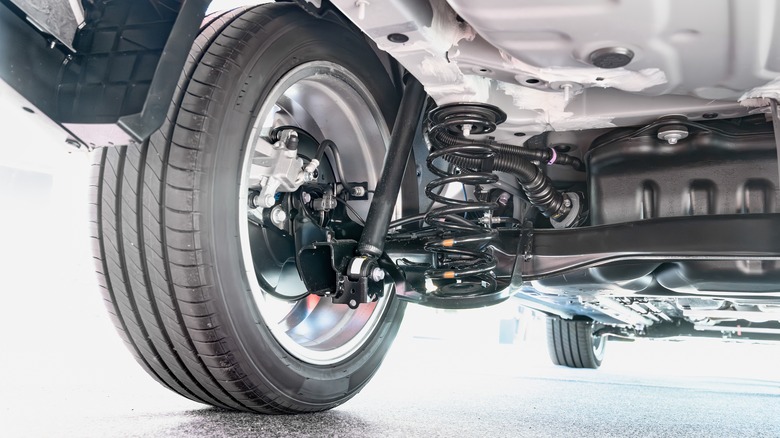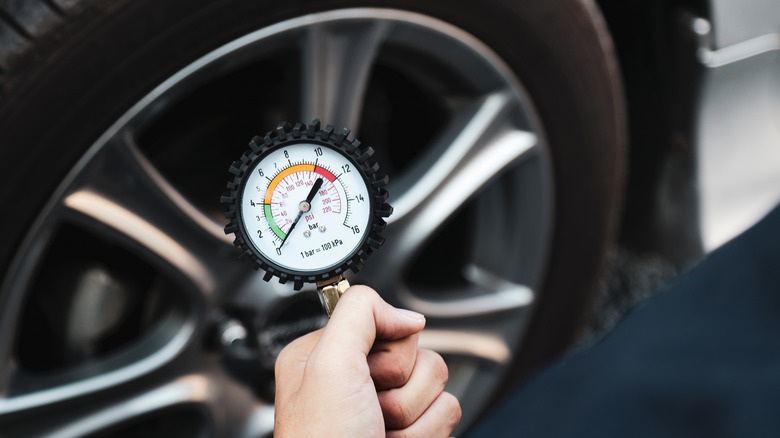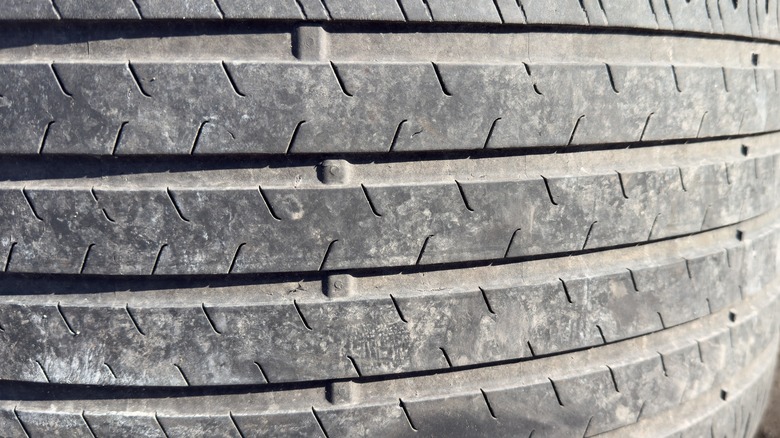Simple Checks That Will Maintain Your Car's Suspension
We may receive a commission on purchases made from links.
Your car's suspension is one of its most vital elements for safe, comfortable travel. Technically, you can put a box on four wheels and call it a car, but without a suspension, you'd feel every bump, pit, and divot in the road as though you were scooting over it on your own rear. This is why it's of the utmost importance that your suspension stay in good working order, both to keep your car sturdy and functional and to save you a fortune on chiropractic visits.
As such a vital implement, it should go without saying that your suspension is a complicated piece of machinery, and shouldn't be messed with if you don't know what you're doing. If you believe there's some kind of problem with your suspension, take your car to your local garage and let them fix it. All that said, there are a couple of innocuous tests and tweaks that anyone can perform to ensure a suspension's overall integrity and efficacy. Both of these tests revolve around your tires, specifically their level of inflation and wear on their treads, and can be performed in your home garage without any specialized tools or equipment.
Regularly check your tire pressure
The first test is an easy one: check your tire pressure. Your tires are the most overt element of your car's suspension, and any kind of obvious quirks they exhibit may be a sign of unusual activity within your suspension.
Even if you don't have a tire warning light activated on your dashboard, you should periodically check out your tire pressure with a portable pressure gauge — like this one from AstroAI for $12.99. You should have one in your glove box, or you can use a digital pressure monitoring system attached to every tire simultaneously. If you have a newer car, you may even have a pressure monitoring system built right in. Either way, there should be either a placard on the driver's side door jamb or a table in your car's owner's manual listing the tires' ideal PSI level.
If any of your tires are above or below their ideal PSI, even by a little bit, you should get them properly adjusted. You can do this at home with a portable inflation device from a brand like Milwaukee or DeWalt, or just visit your local gas station and use a pumping machine. If the tire is overinflated, just open the valve and let the air out until it hits its ideal level, though make sure the tire has been cool for at least three hours before doing this. Ensuring your tires are properly inflated will keep your suspension balanced and protected from sudden lurches and impacts.
Give your tire treads a thorough inspection
The other test is to check your tire's tread. The wear on your tire's treads can indicate irregularities in your suspension — for example, if there are a lot of small divots or bare spots, there may be a problem in the suspension causing your car to subtly bounce and wear out your tires in places.
To check a tire's tread depth, there's an old trick you can use called the penny test. Just find a regular old penny, make sure Lincoln is facing you, and turn it upside-down. Insert the penny into your tire treads and look carefully at Lincoln's head. Ideally, a tire's tread should measure in at more than 2/32 inches. If you can still see the top of Lincoln's head while the penny is in the tread, that means the tread has worn down too deeply.
Technically, tire tread problems don't automatically indicate a suspension problem; they could also be indicative of misaligned wheels, grinding into the treads at a weird angle. Whether it's a problem with the suspension or the wheels, though, it doesn't really matter. Those are both good reasons to make an appointment at your local garage as soon as possible.


